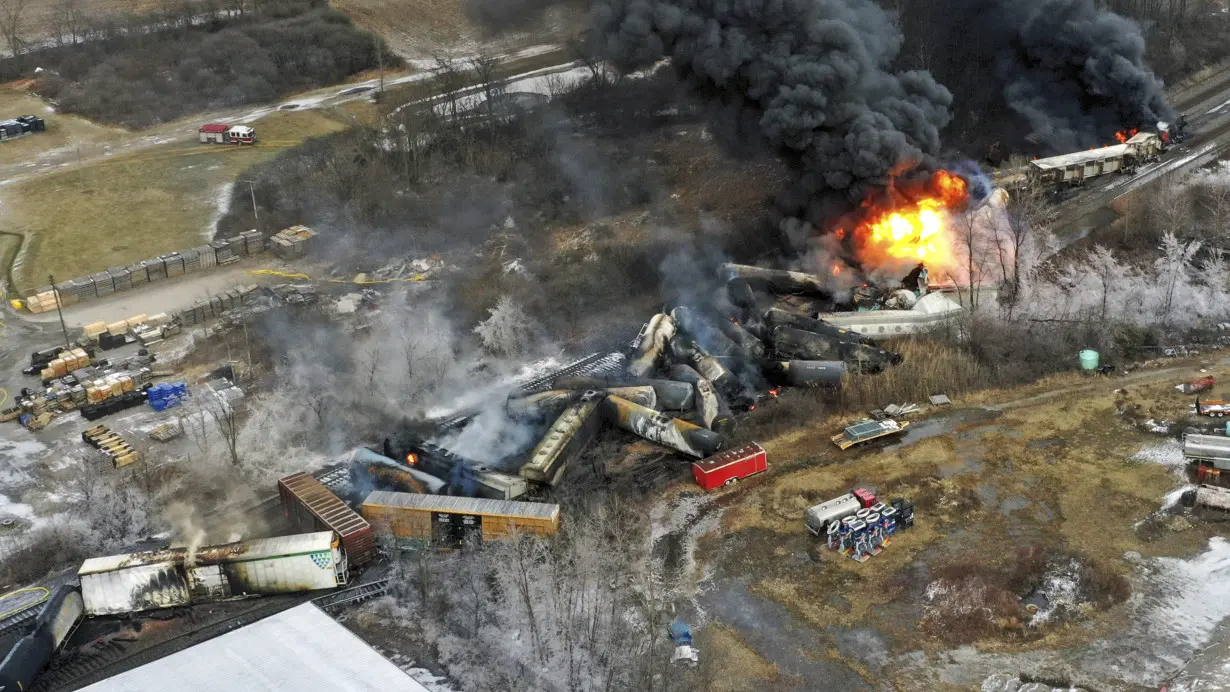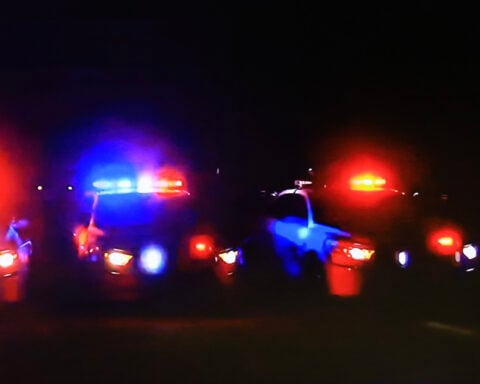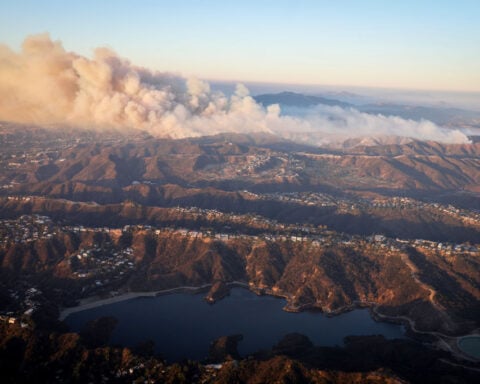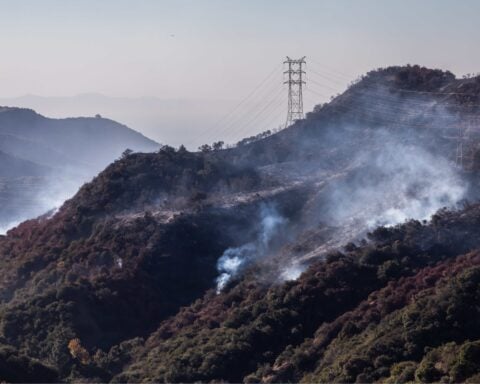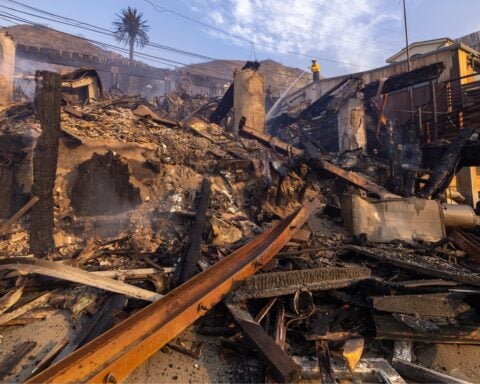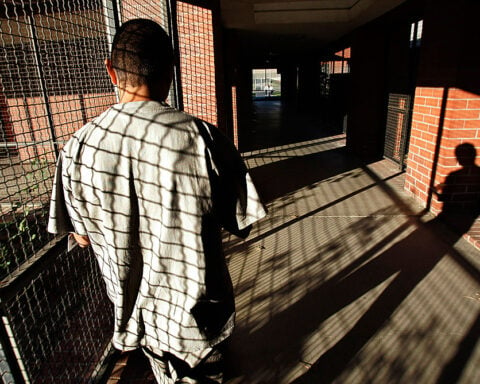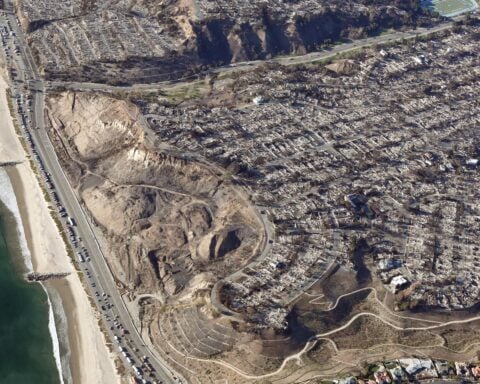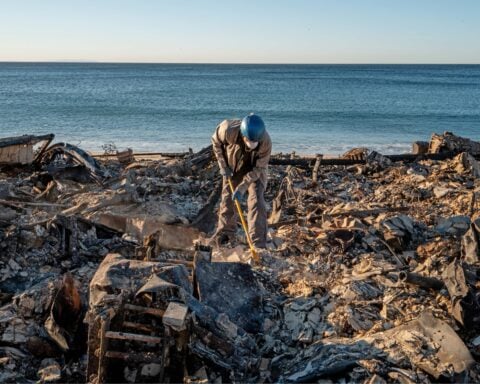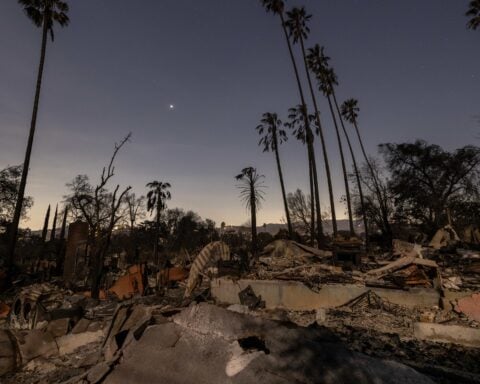OMAHA, Neb. (AP) — The changes railroads announced after last year's fiery crash in East Palestine, Ohio, haven’t yet made a major difference, statistics show, and reforms have stalled in Congress.
A few key measures in the latest Federal Railroad Administration statistics, including the total number of train accidents, worsened over the first 11 months of last year compared to the same period in previous years. Meanwhile there were some improvements with other numbers, like total derailments.
The overall picture is that rail safety hasn’t significantly improved in recent years — and as the Norfolk Southern derailment in East Palestine last Feb. 3 and others demonstrate, just one derailment can be disastrous when hazardous chemicals are involved. The small town near the Ohio-Pennsylvania border is still struggling to recover a year later.
U.S. Transportation Secretary Pete Buttigieg said there was a meaningful 15% decrease in derailments along mainline tracks after Congress responded to a number of high-profile train crashes involving crude oil in the early 2010s. "Progress has plateaued as derailments and preventable incidents are happening at an unacceptable rate,” Buttigieg said, urging Congress to pass the reforms now.
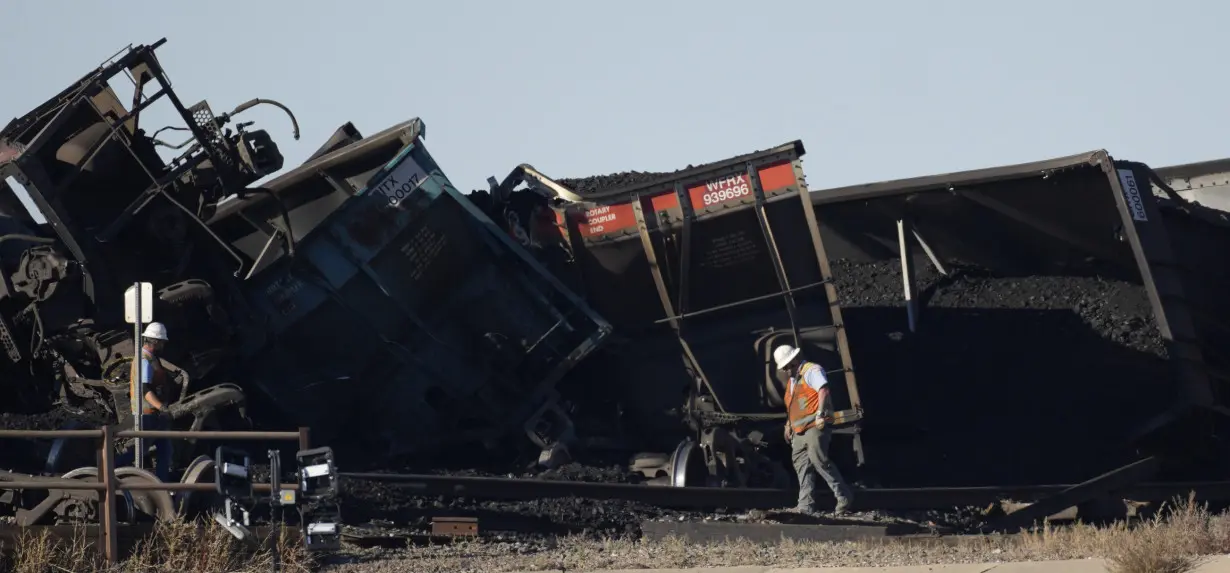
The railroad industry defends its record as the safest way to transport hazardous materials over land — something the head of the National Transportation Safety Board agreed with in recent testimony in the House — though officials acknowledge the railroads need to continue improving safety. And the Association of American Railroads trade group says most of the measures railroads promised to take last spring weren’t completed until late last year, so they aren’t yet reflected in the numbers.
Safety statistics are mixed for the six biggest freight railroads that dominate the industry — Norfolk Southern, CSX, Union Pacific, CPKC, Canadian National and BNSF.
For the majority of 2023 the total number of train accidents increased slightly to 4,845, including more than 600 deaths.
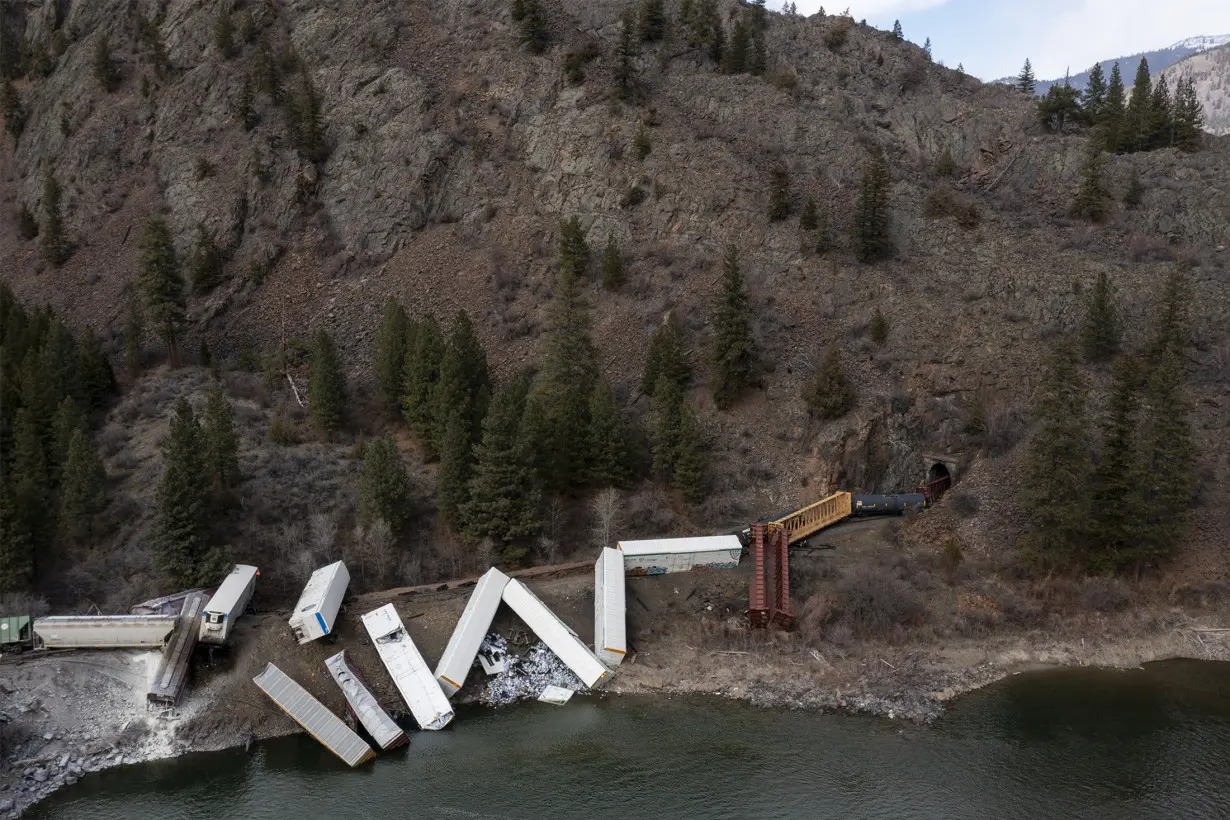
When comparing 2022 and 2023, the total number of derailments declined about 2.6% — but there were still nearly three derailments a day nationwide. Railroads point out that roughly two-thirds of those crashes happen at slow speeds in railyards and don’t cause significant damage.
There were 53 major derailments last year causing damage over $1 million, a surge of nearly 33%. Norfolk Southern has said the cost of the East Palestine derailment has already topped $1.1 billion, and that total will continue to grow with cleanup costs and lawsuit settlements.
The number of total crashes caused by the same issue as the eastern Ohio derailment more than doubled nationwide last year to 19. Overheating bearing failures remain a small fraction representing less than 2% of all accidents.
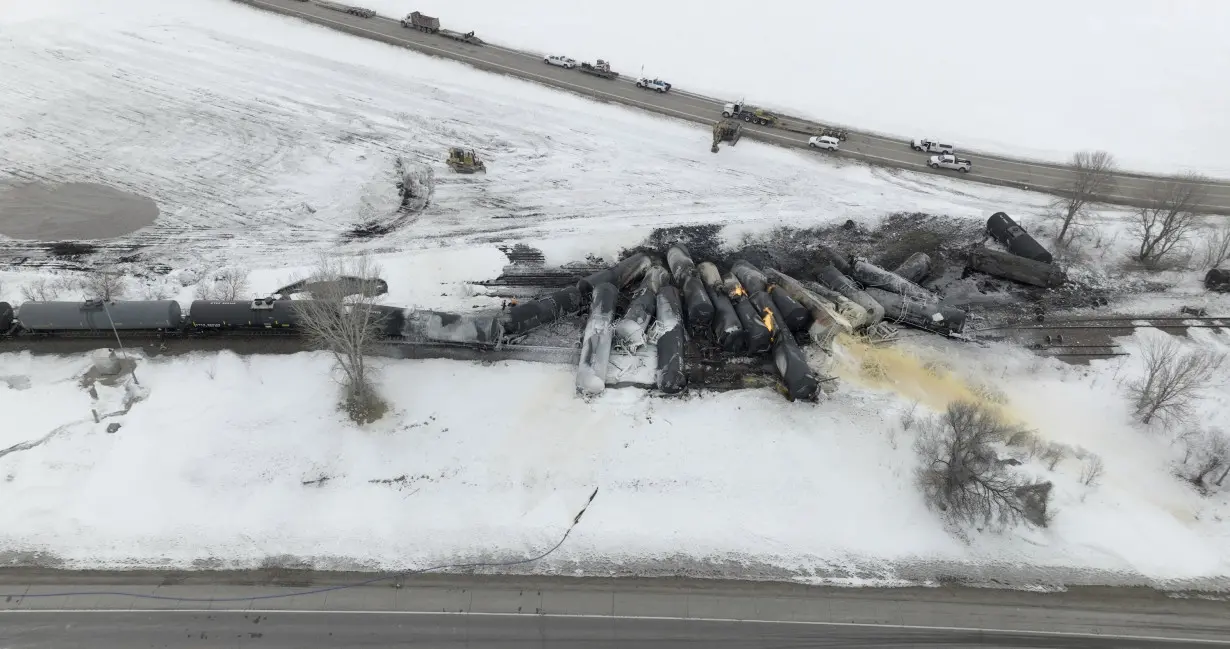
All 13 railroad unions have sounded the alarm about the dangers of the lean operating model that has cut roughly one-third of the industry's rail jobs. The unions say that as a result of these cuts, inspections are rushed — or done by less qualified workers — and everyone remaining is overworked. They also say companies may be neglecting to do preventative maintenance.
“East Palestine was no surprise,” said Jared Cassity, the safety chief at the SMART-TD union, which represents conductors. “The next East Palestine, at least at this pace that we’re going, is imminent to some degree.”
The railroads defend their operating model — which relies on fewer trains that have grown much longer — as simply helping them make the best use of their locomotives, tracks and crews without jeopardizing safety, and the Federal Railroad Administration says safety statistics haven’t gotten significantly worse since they started using it.
But Tony Cardwell who leads the Brotherhood of Maintenance of Way Employes Division union, which represents track maintenance workers, said the railroads are under pressure to cut costs from “vulture capitalist” investors.
Over the past year, the railroads have agreed to provide paid sick leave to most of their workers for the first time and improve the way engineers and conductors are scheduled in order to help reduce fatigue.
Last year, the major freight railroads installed hundreds of new trackside detectors to spot overheating bearings, as part of their goal of adding roughly 1,000 of those nationwide to make the average spacing between them 15 miles (24 kilometers) in most places.
All railroads will now stop trains when bearings detect a gap of more than 170 degrees from the outside air, and there are new standards to help them better track when bearings start to heat up to catch issues sooner.
Railroads have also been installing complex portals filled with cameras, other sensors and advanced detectors to spot problems as they’re moving.
Norfolk Southern also took additional steps like hiring a consultant from the nuclear power industry to review its safety practices, establishing a pilot program so employees can anonymously report safety concerns and changing rules for train assembly to better balance the weight of heavy cars and hazardous materials.
“We’re always going to strive to get better at safety,” Norfolk Southern CEO Alan Shaw told The Associated Press. “There’s no one thing that you do. It’s a bunch of different things."
The railroad safety act has yet to get a vote in the full Senate — or even a hearing in the House. The measure would call for the creation of federal standards for those trackside detectors, increased inspections by qualified employees and two-person crews on every freight train.
Ian Jefferies with the AAR trade group says railroads haven’t opposed the bill outright — but they are fighting several provisions like the two-man crew requirement and locomotive inspection rules. They say such changes aren't related to what caused the East Palestine wreck. After all, that train had three crew members, and the railcar — not a locomotive — had the flaw. The railroads also want a cost-benefit analysis to be done on the rules.
House Republicans say they want to wait for the final NTSB report before they act, so they can be sure that any new regulations are directly related to the cause of the East Palestine derailment. The report won’t be out until sometime this summer.
Democratic Ohio Sen. Sherrod Brown, who was part of the bipartisan group that proposed the bill, blames railroad industry lobbying from keeping the act from advancing.
“It goes down to the power of the rail industry. I mean the fact that Norfolk Southern and other railroads have continued to oppose this bill,” Brown said. “They’ve always put profits over people.”

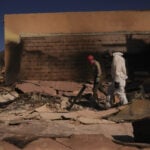 Firefighters prepare for increasing gusts following brief reprieve for LA area
Firefighters prepare for increasing gusts following brief reprieve for LA area
 John Ratcliffe, tapped by Trump to lead the CIA, will face questioning in the Senate
John Ratcliffe, tapped by Trump to lead the CIA, will face questioning in the Senate
 What to know about Trump's attorney general pick Pam Bondi as she faces questioning on Capitol Hill
What to know about Trump's attorney general pick Pam Bondi as she faces questioning on Capitol Hill
 Nippon Steel wants to work with Trump administration on US Steel deal, Mori tells WSJ
Nippon Steel wants to work with Trump administration on US Steel deal, Mori tells WSJ
 After cable damage, Taiwan to step up surveillance of flag of convenience ships
After cable damage, Taiwan to step up surveillance of flag of convenience ships
 BOJ will raise rates if economy, price conditions continue to improve, Ueda says
BOJ will raise rates if economy, price conditions continue to improve, Ueda says
 Manatees congregate in warm waters near power plants as US winter storms graze Florida
Manatees congregate in warm waters near power plants as US winter storms graze Florida
 AAPI adults prioritize immigration, but split on mass deportations: AP-NORC/AAPI Data poll
AAPI adults prioritize immigration, but split on mass deportations: AP-NORC/AAPI Data poll
 As fires ravage Los Angeles, Tiger Woods isn't sure what will happen with Riviera tournament
As fires ravage Los Angeles, Tiger Woods isn't sure what will happen with Riviera tournament
 Antetokounmpo gets 50th career triple-double as Bucks win 130-115 to end Kings' 7-game win streak
Antetokounmpo gets 50th career triple-double as Bucks win 130-115 to end Kings' 7-game win streak
 Zheng loses to No 97 Siegemund, Osaka rallies to advance at the Australian Open
Zheng loses to No 97 Siegemund, Osaka rallies to advance at the Australian Open
